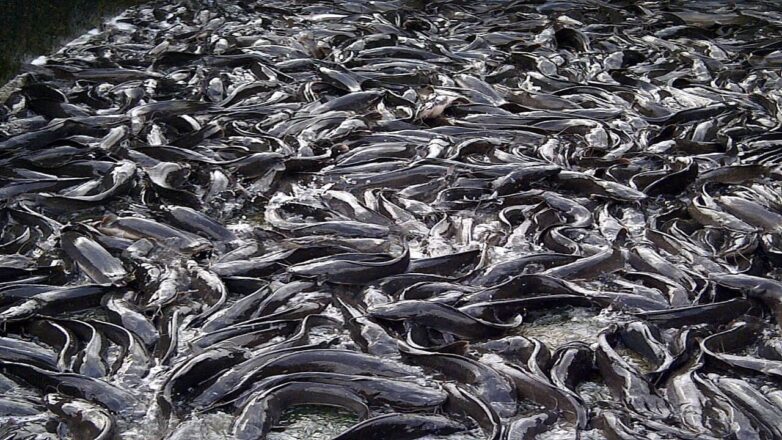
Catfish farming, also known as catfish aquaculture, involves raising catfish in controlled environments such as ponds, tanks, or cages. Here’s an overview of the catfish farming process:
- Site Selection: Choose a suitable location for the catfish farm, considering factors such as water availability, soil quality, climate, and proximity to markets. Flat land with access to freshwater sources like ponds, rivers, or wells is often preferred.
- Pond or Tank Construction: Construct ponds or tanks based on the scale of the operation and environmental conditions. Ponds should be properly designed with features like water inlet and outlet structures, levees, and drainage systems. Tanks can be above ground or dug into the ground, lined with materials like concrete, plastic, or geomembrane liners.
- Water Management: Maintain optimal water quality parameters such as temperature, dissolved oxygen, pH, and ammonia levels. Install aeration systems and filtration equipment to ensure adequate oxygenation and water circulation. Regularly monitor water quality and perform necessary water exchanges or treatments.
- Stocking: Introduce juvenile catfish, known as fingerlings, into the ponds or tanks. Stocking densities vary depending on the size of the production system, but typically range from 1,000 to 6,000 fingerlings per acre of pond.
- Feeding: Provide nutritionally balanced feed to the catfish to support their growth and development. Catfish feed typically consists of a combination of plant-based ingredients, fish meal, and other protein sources. Feed catfish multiple times a day, adjusting feeding rates based on water temperature and fish size.
- Water Quality Management: Monitor and manage water quality parameters to prevent disease outbreaks and ensure optimal fish health. Implement strategies to control algae growth, manage nutrient levels, and prevent accumulation of organic matter.
- Health Management: Monitor fish health regularly and implement disease prevention measures such as vaccination, biosecurity protocols, and quarantine procedures. Treat any outbreaks of diseases promptly using approved medications or treatments.
- Harvesting: Harvest catfish when they reach market size, typically around 1 to 2 pounds, depending on market demand and preferences. Use methods such as seining, netting, or draining ponds to capture the fish. Handle harvested fish carefully to minimize stress and damage.
- Processing and Marketing: Process harvested catfish by removing scales, gutting, and chilling to maintain freshness. Catfish can be sold fresh on ice, frozen, or processed into value-added products such as fillets, nuggets, or smoked fish. Develop marketing strategies to sell catfish to wholesalers, retailers, restaurants, or directly to consumers.
- Record Keeping and Management: Keep detailed records of production inputs, stocking densities, feeding rates, water quality parameters, and harvest yields. Use this information to analyze performance, optimize production efficiency, and make informed management decisions.
Overall, successful catfish farming requires careful planning, proper management practices, and attention to detail throughout the production cycle. Continuously monitor and adapt to changing conditions to ensure the sustainability and profitability of the operation.